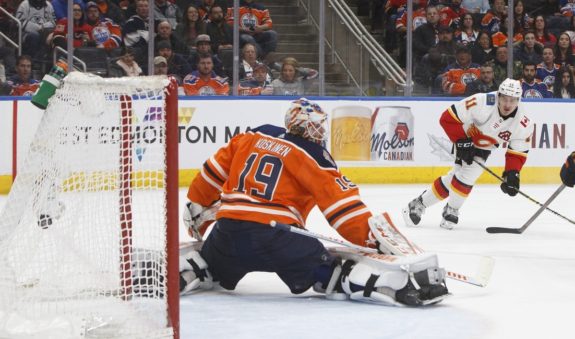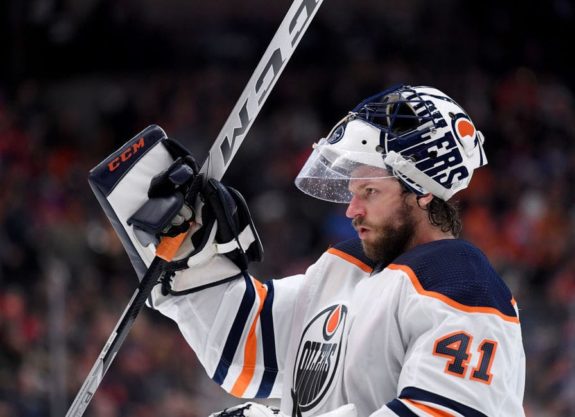Though no official date has been announced for the start of this year’s 24-team postseason, it was reported by TSN’s Bob Mackenzie on July 2, that Edmonton would be one of the two “hub cities” when the NHL resumes. Despite the advantage of hosting games in their backyard, fan-less or not, at Rogers Place, the Oilers won’t enter the fray with the luxury of a traditional No. 1 netminder, a requirement for any team wishing to contend.
The very large tandem of Mike Smith (6-foot-5) and Mikko Koskinen (6-foot-7) was often steady, maybe even great this season, but other times infuriating, and sometimes, you know, kind of displeasing. Shared regular-season goaltending duties are as prevalent as ever, but the Oilers need to decide on a No. 1 entering their play-in series with the Chicago Blackhawks. Who should they go with?

The regular season tag-team was good enough for the Oilers to finish second in the Pacific Division—it helped that Connor McDavid and Leon Draisatl can score quite literally at will—but “good enough” rarely translates to postseason success for a team that isn’t amidst a historically dominant campaign.
The Oilers are going to need one of their goaltenders to emerge as a star. Koskinen will have to, metaphorically speaking, “Sweet Chin Music” Smith through a window a la Shawn Michaels and Marty Jannetty—to stake claim to the starting role. He was the more consistent goalie this season and was arguably playing the best hockey of his career before play was put on hold.
Comparing the Two Netminders
Koskinen put up a base stat line of 18-13-3, with a 2.75 goals-against average (GAA) and .917 save percentage (SV%). Smith put up a record of 19-12-6 with a GAA of 2.95 and SV% of .902; the disparities between the two goalies are visible, yet not glaring.
Smith, 38, has playoff experience on his side. Koskinen has yet to taste the intensity of playoff hockey. However, Smith’s last stint in the playoffs with the Calgary Flames in 2019 didn’t go well. Despite a one-sided upset of his first-seed Flames by the eighth-seed Colorado Avalanche, he played well, and it’s impossible to exclusively blame Smith, especially with a relentless Avalanche blitzkrieg that would have disoriented any goaltender. But that was last season, and consistency has evaded him for most of this campaign.

Against a Blackhawks team that has won three Stanley Cups in the past decade with a core that’s still relatively intact, though not the evergreen threat of yesteryear, the Oilers will need to withstand early body shots hurled their way, especially considering their 8-18-6 record when the opponent scores first.
Amongst the 30 goalies who played at least 2100 minutes this season, Smith finished T-25th in Really Bad Starts (RBS) a stat indicating starts with an SV% below 85%. Koskinen finished tied for fourth in the league with 5 RBS.
It should also be mentioned that Koskinen was on a tear before the season was suspended. In his last four games, he saved 142 of 147 shots (.965 SV%), including once in relief of Smith, against the Hawks of all teams, when Smith was pulled for allowing four goals on just 21 shots. Smith compiled an SV% of .884 percent in his final five contests.
Koskinen has been relatively steady most of the season, never falling below a SV% of .900 in any month of the abbreviated season—Smith did so in three separate months (November, December, and March).
To make any sort of noise, the Oilers are going to need stability from their last line of defense (it would also help in their defense core alleviated some stress, something that has eluded this team all season). Koskinen, more than Smith, can provide them such. In Game 1 of their series against Chicago, Koskinen should get the nod.